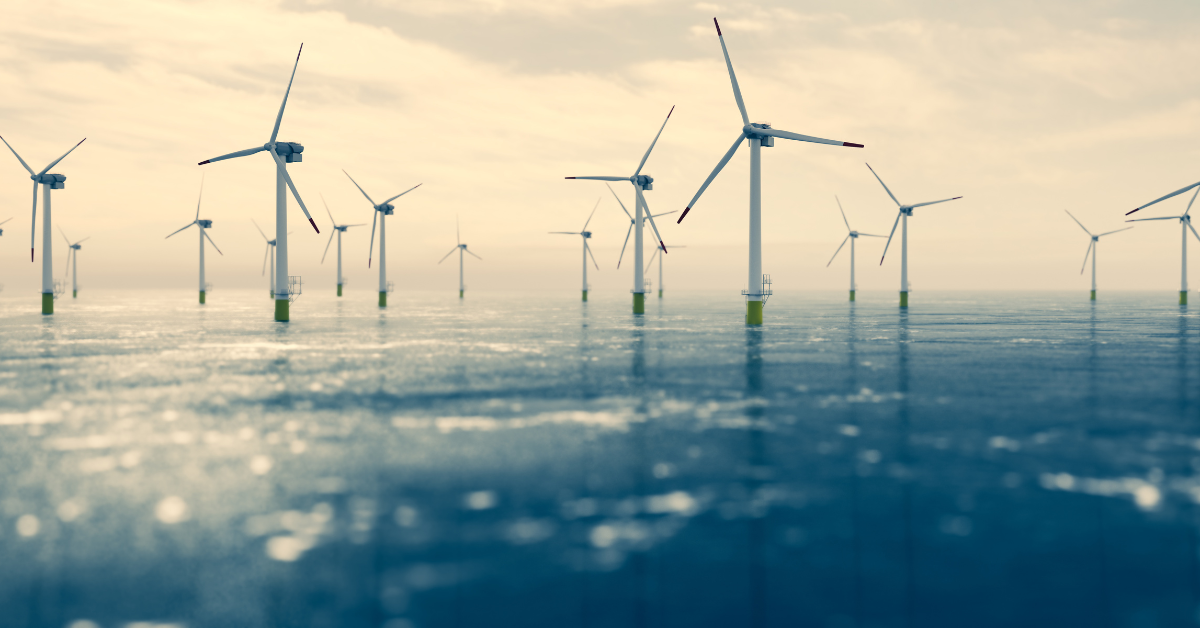Mitsubishi Corporation and a subsidiary of Chubu Electric Power have decided to withdraw from offshore wind power projects planned off Akita and Chiba Prefectures. The decision was driven by soaring material costs and the depreciation of the yen, which made it impossible to secure profitability even after completion. As offshore wind has been positioned as a key pillar of Japan’s renewable energy strategy, this withdrawal will inevitably affect government policy.
Background of Mitsubishi Corporation and Chubu Electric’s Withdrawal
Mitsubishi Corporation and Chubu Electric Power’s subsidiary won three offshore wind power projects in a 2021 government auction. The project sites were off Choshi City in Chiba Prefecture, and off Noshiro City, Mitane Town, Oga City, and Yurihonjo City in Akita Prefecture. Operations were originally planned to start between 2028 and 2030.
The winning bid was determined largely by the low electricity selling price of 11.99 to 16.49 yen per kilowatt-hour they proposed, well below the government’s expectations. This gave them an advantage in the competitive bidding process, but it later became a major burden that undermined profitability.
Additionally, the Ukraine crisis, soaring global material prices, supply instability, and the depreciation of the yen all worsened the business environment, leading Mitsubishi and Chubu Electric to reassess the feasibility of the projects. Ultimately, both companies were forced to decide to withdraw.
Impact of Rising Construction Costs and Impairment Losses
The construction costs, initially estimated at over 1 trillion yen, eventually rose to more than 2 trillion yen. Rising material prices combined with the technical difficulties of offshore construction caused costs to balloon.
Mitsubishi Corporation recorded an impairment loss of 52.4 billion yen, while Chubu Electric Power projected a 35.6 billion yen loss. Although renewable energy is seen as a promising sector, this case highlights the uncertainty of investment recovery in large-scale projects.
| Company | Impairment Loss |
|---|---|
| Mitsubishi Corporation | 52.4 billion yen |
| Chubu Electric Power | 35.6 billion yen |
| Total | 88.0 billion yen |
The scale of these losses not only affects corporate finances but also sends a strong warning to investors and markets about the risks inherent in offshore wind development.
Impact on Energy Policy and Government Response
In its Basic Energy Plan, the Japanese government has set a target of raising wind power’s share of electricity generation from about 1% today to 4–8% by 2040. Offshore wind power was intended to be a core power source in achieving this goal.
However, with Mitsubishi and Chubu Electric’s withdrawal, there is now a real risk of failing to secure the planned capacity. The government has announced plans to promptly re-auction the three sites, but with construction costs soaring and profitability uncertain, new participants may be reluctant to enter.
In Europe, governments provide long-term contracts and subsidy schemes to reduce risks for private companies. Unless Japan undertakes similar institutional reforms, it risks falling behind global competition.
| Item | Current Status | 2040 Target |
|---|---|---|
| Wind Power Share | ~1% | 4–8% |
| Offshore Wind Role | Demonstration/Introduction | Core Power Source |
| Policy Tools | FIT scheme, bidding process | Improved schemes and stronger support needed |
Challenges Facing Offshore Wind Development in Japan
Offshore wind development in Japan faces unique challenges compared to Europe.
- High risk of typhoons and natural disasters
- Complex seabed topography increasing foundation costs
- Negotiations with local fisheries and landscape concerns
- Rising costs of imported materials due to currency depreciation
These challenges cannot be solved by technology alone; institutional design and community consensus-building are equally important.
| Item | Europe | Japan |
|---|---|---|
| Natural Conditions | Relatively calm seas | High risk of typhoons and rough seas |
| Seabed Topography | Flat | Complex, leading to higher costs |
| Institutional Framework | Long-term contracts, strong subsidies | Auction-based, unstable profitability |
| Social Consensus | Well-established | Fisheries and regional coordination still major issues |
This comparison shows that Japan must not simply import European models but instead create institutional frameworks and technological innovations tailored to its own conditions.
Future Outlook and Sustainable Energy Strategy
This withdrawal has clarified the key issues Japan must address in order to advance offshore wind. These include:
- Mitigating foreign exchange risks
- Stabilizing material procurement
- Nurturing domestic turbine manufacturers
- Expanding financial support
| Challenge | Required Measures |
|---|---|
| Currency Risk | Hedging schemes, subsidies |
| Material Procurement | Domestic production, diversified supply chains |
| Technological Development | Floating wind turbines, advanced materials |
| Financial Support | Long-term loans, guarantee systems |
By implementing these measures, companies will be able to reduce risks and re-enter offshore wind projects with greater confidence. To make renewable energy a mainstream power source, government-backed institutional support is indispensable.
Conclusion
The withdrawal of Mitsubishi Corporation and Chubu Electric Power represents a serious setback for Japan’s energy strategy. Faced with soaring construction costs and currency depreciation, the companies judged that the projects would not be profitable and chose to exit.
Although the government plans to re-auction the sites, unless conditions improve, the same problems will likely recur. What is needed now is a framework that reduces risks and creates a sustainable business environment.
Offshore wind power still holds the key to Japan’s renewable energy expansion. Whether this withdrawal becomes a turning point for policy reform and technological innovation will determine the future success or failure of Japan’s energy policy.






